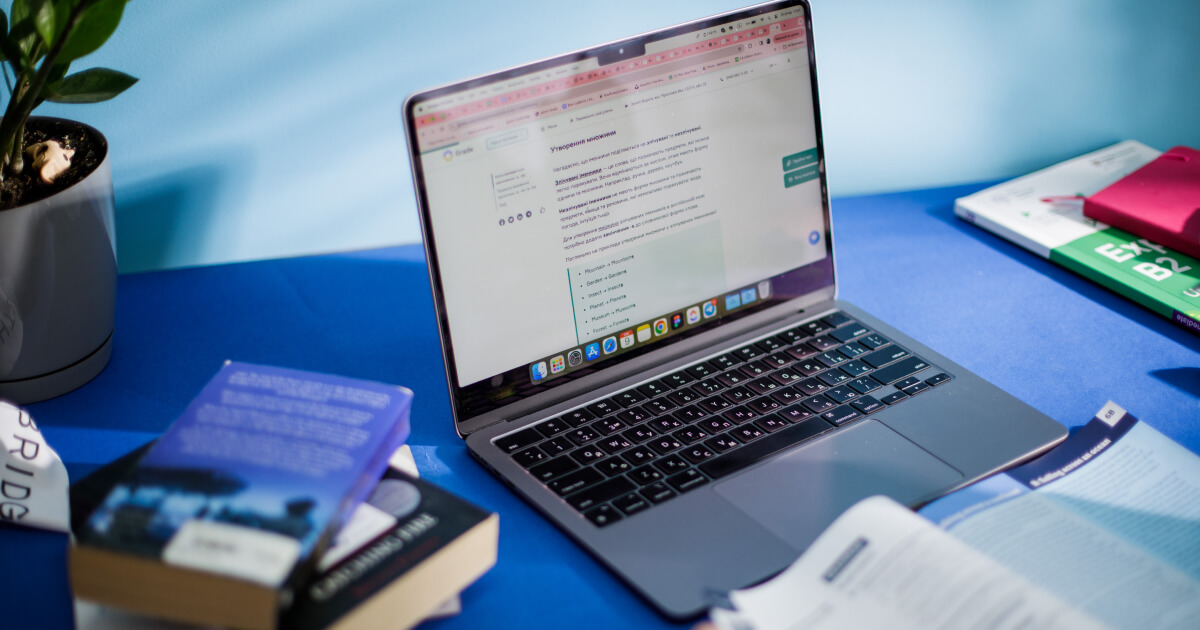5 ESL teaching methods for you to know as an English teacher
- Methodology

01.03.2024
Using different listening styles allows teachers to better connect with students, understand their needs, and encourage meaningful participation in learning.
In this article, we’ll explore these listening styles and how teachers can use them strategically in their classrooms.

Become a pro in teaching listening
Boost your skills with usListening styles refer to the various ways individuals approach and engage in the process of listening.
People may have different preferences and tendencies when it comes to receiving and interpreting auditory information. Understanding these listening styles can be important, especially for teachers, as it can enhance communication and promote effective learning.
Individual preferences, learning backgrounds, cultural influences, and cognitive processing differences can all contribute to learners’ varying listening styles.
Personal preferences are important, as some students may naturally gravitate toward certain listening approaches due to their interests, personality, or prior experiences.
Additionally, learners’ cultural backgrounds can influence their communication styles and expectations regarding listening and speaking.
Furthermore, cognitive factors such as attention span, processing speed, and working memory capacity can also shape how learners approach and engage with listening tasks. The combination of these factors contributes to the variety of listening styles seen among English learners.
Here are some common examples of the listening styles that our students can possess.
How to teach listening through the exposure?
Some English learners focus primarily on understanding the literal meaning of what is being said. They may struggle with idiomatic expressions, figurative language, and cultural references but excel at comprehending straightforward information.
For example, they are really good at fill-in-the-blank exercises with straightforward sentences or dialogues, listening to short passages and identifying specific details, such as names, numbers, or locations, and matching activities where students connect spoken words or phrases with corresponding written words.
This style involves paying attention to the overall message and context rather than focusing on individual words or phrases.
English learners who adopt this style may have a better grasp of the big picture but might miss nuances or details. They are usually good at listening and summarising the main points, discussing the overall theme or message, identifying the main characters, setting, and plot, etc.

Learners with this style tend to tune in to specific information that is relevant to their immediate needs or interests. They may ignore irrelevant details or filter out extraneous information to focus on key points.
They are good at completing tasks based on instructions given in the listening passage, like following directions to complete a recipe or solve a problem. Listening to a news report and extracting relevant details related to a specific topic or event is another common task they easily cope with.
Some English learners prefer interactive listening, where they actively engage with the speaker by asking questions, seeking clarification, or participating in discussions. This style encourages interaction and fosters deeper comprehension through dialogue.
Their favorite tasks may include participating in a role-play where students listen to their partner’s responses and provide appropriate follow-up questions or comments.
They also love conducting mock interviews where students take turns asking and answering questions, and practicing active listening skills. Listening to a story or narrative and discussing reactions, interpretations, and predictions with a partner or group is also effective.
How to develop listening skills?
This style involves analysing and evaluating the information being conveyed, including the speaker’s tone, intent, and credibility. English learners who adopt this style may question assumptions, detect biases, and assess the validity of arguments.
Students engage in tasks such as listening to a debate or argument, identifying the main points and supporting evidence presented by each side. They love to analyze speeches or advertisements and discuss the techniques used to influence the audience.
Listening to conflicting viewpoints on a controversial topic and evaluating the validity and credibility of each argument is another great critical task for such learners.
Learners with this style focus not only on the words being spoken but also on the speaker’s emotions, perspectives, and experiences. They strive to understand the speaker’s feelings and respond with empathy and support.
Empathetic listening tasks focus on understanding and responding to the emotions and experiences conveyed through spoken language.

English learners employing this style listen with a high level of concentration and effort, often replaying or reviewing segments to fully understand the content.
Students might listen to a passage and answer comprehension questions that demand recall of specific information.
Alternatively, they may transcribe spoken language word for word to practice accuracy and spelling, or take detailed notes on key points and supporting details.
Learners strategically use various techniques and tactics to enhance comprehension, such as predicting content, summarising key points, or using context clues to infer meaning.
Students might preview a listening passage by skimming questions or headings before listening to the audio. They may also use context clues to guess the meaning of unfamiliar words, etc.
Practical tools for developing listening
This style involves internalizing and processing what is being said, as well as reflecting on its meaning and implications.
Learners may pause to consider how the information relates to their own experiences, knowledge, and beliefs.
As teachers, we must be aware of various listening styles in order to effectively communicate with students and teach them individually in the classroom.
Recognising and respecting diverse listening preferences allows teachers to adapt their teaching style, form positive relationships, and create an inclusive learning environment.
By addressing the various learning strengths and challenges, we can improve student engagement, support those with special needs as well as optimise overall educational results.
By incorporating activities that cater to different listening styles, teachers can create a more inclusive and motivating learning environment where students feel empowered to actively participate and succeed.
Teachers are also encouraged to develop effective communication skills and promote a culture of respect and inclusion in the classroom by understanding different listening styles.

Teachers, much like their students, exhibit diverse listening styles that shape their interactions within the classroom environment.
Active listening involves fully concentrating on what the student is communicating, responding to it, and remembering the details.
For example, imagine a student sharing their concern about a difficult task. The teacher should listen actively, maintaining eye contact, nodding in acknowledgment, and changing key points to convey understanding. This encourages open communication and trust.
Conversely, teachers who struggle with maintaining attention or exhibit passive listening behaviors may inadvertently convey disinterest, which can hinder effective communication and rapport building with students.
7 best websites to develop listening
Reflective listening appears deceptively easy, but it takes practice and skill to do well. In reflective listening, the listener tries to clarify and restate what the other person is saying.
For example, during a personal discussion about a student's struggles in a particular subject, the teacher engages in reflective listening by saying, ‘It seems that you find the exercise /test /homework overwhelming.’ This not only enhances understanding but also encourages the student to clarify their concerns.
On the other hand, teachers who rely on surface-level listening may miss important nuances or insights shared by students, leading to misunderstandings or misinterpretations.

The goal of appreciative listening is to make the speaker feel valued and truly understood without judgment. By combining active listening with positive psychology, our appreciative listening framework makes it simple to listen to our students.
Additionally, do not forget to praise your learners, which significantly increases their motivation and willingness to study. Focus on what your students did well instead of what they did wrong.
For example, during a class discussion, the teacher practices appreciative listening by expressing genuine enthusiasm for the diversity of opinions presented.
The teacher might say, ‘I appreciate the effort and creativity, I know it might have been difficult for you,’ which promotes a positive and inclusive learning environment.
Develop listening with cartoons
Empathic listening involves tuning in to the student’s feelings, acknowledging them, and responding with compassion. By being strategic in our listening, we can better understand the needs and concerns of our students and provide more effective support.
For example, during counseling, a student may talk about personal challenges. The best way to support your student is by saying: ‘It sounds like you’re feeling overwhelmed. I’m here to support you.’
This style creates a strong emotional connection and provides a supportive space for students.
Selective listening involves consciously focusing on specific aspects of the student and the message while filtering out irrelevant details.
For example, during parent-teacher conferences, the teacher practices selective listening by focusing on the main academic concerns raised by the parents.
This approach allows the teacher to provide targeted guidance and support.

Now that we have explored various listening styles in teacher-student communication, we would like to share some practical tips for effective interaction:
Enhance listening with podcasts
In conclusion, creating a positive and enriching academic environment is impossible without mastering listening styles. By understanding and applying these styles, teachers can improve their ability to connect with students, meet their academic needs, and foster open communication and trust.
Is paraphrasing or summarising what you hear from students necessary?
Yuliia Fedochenko
Author
Teacher of General English & Business English, Young Learners
Yulia Chorna
Author
Product Manager at Grade University | Experienced Educator in General, Business English & Exam Prep | ELT Conference Organiser | Speaker at TESOL & IATEFL Conferences | Passionate About Teacher Development & Educational Innovation
Comments
Leave your comment